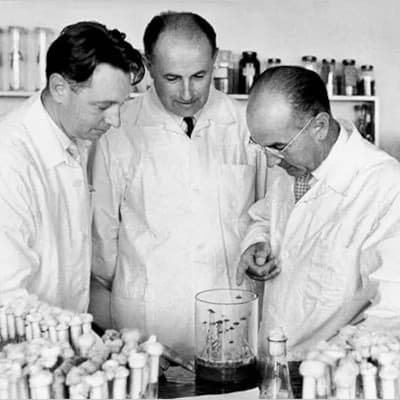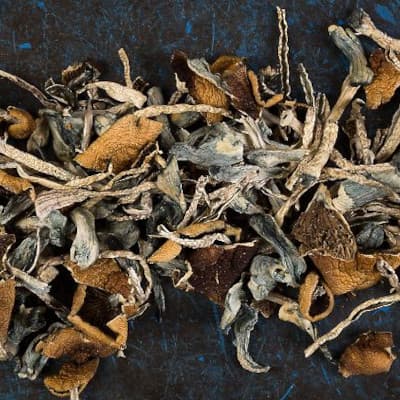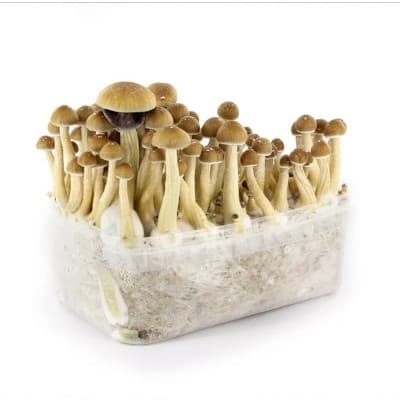BackMexican magic mushrooms - ancient tradition
28.03.2023

Today, magic mushrooms have a large number of fans and followers around the world. This was not always the case. In the 16th century, for example, hallucinogenic mushrooms were still completely unknown in Europe. The situation was different in North and Central America. In present-day Mexico and Guatemala, indigenous societies such as the Aztecs or the Mayas consumed psilocybin mushrooms in rituals and religious ceremonies. The intention could be to read the future or to cure an illness. Different mushrooms were used for ceremonies, which could vary according to the indigenous group or the region in which they lived. Some of these mushrooms are hardly found today, others have become popular classics among mushroom lovers. The monk Fray Bernardino de Sahagún was the first to describe the use of psychoactive mushrooms in his 16th century notes. He called the mushrooms "Teonanácatl", which means flesh of the gods in the indigenous Nahuatl language. However, the existence of magic mushrooms continued to be disputed in the following centuries and the Spanish inquisitors, especially the Catholic Church, tried to suppress the consumption of the mind-expanding mushrooms, so references and traces in written documents and other sources also disappeared.
It was not until the early 20th century that scientists (especially ethnobotanists) began to take an interest in mushrooms and their effects. Jean Bassett Johnson was the first Western scientist to observe a mushroom ritual. Amateur botanist Gordon Wasson traveled to Mexico with his wife in 1940 to participate in a ritual and consume the mushrooms himself. Some time later, Wasson traveled to Mexico again, accompanied by French scientist Roger Heim. The latter brought a sample of the mushrooms back to Europe and left it with none other than Albert Hoffmann, the discoverer of LSD. It was Hoffmann who first extracted the psychoactive ingredient from the mushrooms and named it psilocybin.
Great diversity
In Mexico alone there are about 50 different varieties of magic mushrooms. Among the best known are the Calva Mexicana, the Mexicana and the Mexicana Mazapatec. They all differ in optical details, but are nevertheless similar. Mushrooms grow in different regions and therefore have different conditions they need as a basis for life. Some grow on cow dung, others in shady wooded areas. However, they all need a rather humid environment in order to thrive. Since the seasons in Mexico can be divided mainly into dry and rainy, there is a season with good conditions for mushrooms and a season in which they cannot be found. The rainy season runs from May to October and creates good conditions for mushrooms to grow.
Ways of consumption
In Mexico, magic mushrooms are usually consumed fresh. However, as this is only possible in the right season, there are various techniques for preserving mushrooms.
One possibility is to freeze fresh mushrooms. In this way, they can be thawed again when needed, but then they must be consumed quickly. Another common preservation technique is to dry mushrooms. This makes them much lighter and, consequently, they contain more active ingredient compared to their weight. Finally, some mushrooms are also preserved in honey. If fresh mushrooms are completely covered with honey, they will keep for about two to three months before slowly losing their active ingredient.
Mushroom regions of Mexico
Mexico is a huge country. The area of the national territory is about five times larger than that of Germany. However, the areas where hallucinogenic mushrooms grow are mainly limited to the states of Chiapas, Oaxaca, Puebla and the State of Mexico, all located in the southern third of the country. The north of the country tends to be too dry and the east, as well as the areas along the Gulf of Mexico, are quite hot and therefore do not offer ideal conditions for mushrooms to grow.
Current use
Today, mushrooms are still very popular. However, they are no longer only consumed in appropriate ceremonies, but also to expand consciousness and to have fun. There are some places in Mexico that have even established themselves as mushroom tourism destinations. One such example is San José el Pacífico, in the state of Oaxaca. In this picturesque mountain town, Mexican mushrooms can be found everywhere. Even the walls of many houses are decorated with murals depicting mushrooms.
Cultivation with mushroom cultivation box
Many of the legendary Mexican mushroom varieties can now also be cultivated at home with special cultivation kits. Cultivation is not complicated and does not require much equipment or space. Another advantage of cultivation is that the mushrooms hardly develop any odor, so cultivation does not pose a great risk. Kits can easily be ordered on the Internet, for example here on our site. All other important information for a successful start can be found on our topic page.


